Soba noodles are a healthy, gluten free noodle made from buckwheat flour. In this vegetarian recipe, they're tossed with a delicious 3 ingredient sesame sauce and veggies. The best part is, this tasty noodle bowl is easy to make in just 15 minutes!
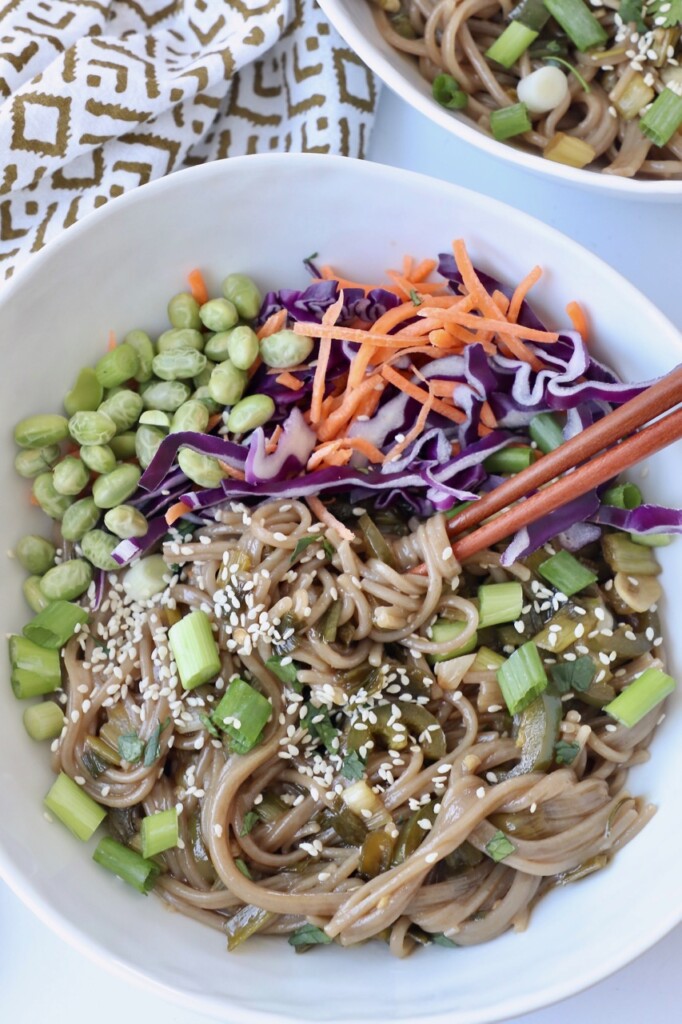
Have you had soba noodles (AKA buckwheat noodles) before? Not only are they healthier than classic wheat noodles, they are perfectly delicious with the best nutty flavor!
I decided to build a bowl highlighting the earthy taste of these wonderful noodles with the best sauce, loads of veggies, and a bunch of yummy toppings.
So set aside a whopping 15 minutes to prepare this easy and healthy meal!
Jump to:
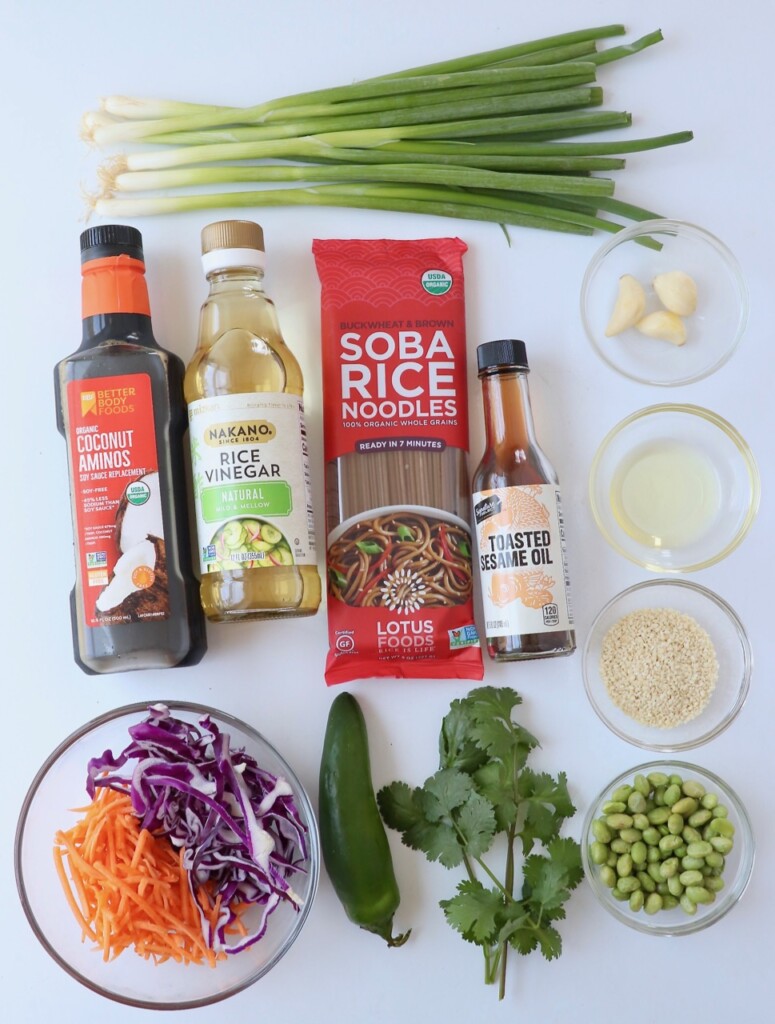
Ingredients
- Soba noodles - if you're gluten free, always make sure to buy soba noodles that are 100% buckwheat flour or mixed with another gluten free flour, like rice flour. I used a Soba Rice Noodle for this recipe, that's made from brown rice flour and buckwheat flour. Some soba noodles, found in stores, will use wheat flour and buckwheat flour, so always be sure to read the label.
- Coconut aminos (or tamari) - I prefer coconut aminos because they add a little sweetness to the sauce with a lot less sodium, but you can also use gluten-free soy sauce, usually labeled as tamari.
- Rice vinegar - this will be found either next to the other vinegars at the grocery store, or near the soy sauce in the Asian aisle. It is not recommended to swap out with other vinegars as the taste will change.
- Toasted sesame oil - it's important that you get a toasted sesame oil for this recipe, as it adds so much flavor to the sauce.
- Canola oil - you may also use olive oil or another vegetable oil.
- Green onions
- Jalapeño
- Garlic - I always recommend fresh garlic cloves for the best flavor.
- Carrots - you can use a grater to shred carrots at home, or purchase pre-shredded carrots in a bag at the grocery store.
- Cabbage - feel free to use red or green cabbage in this recipe. Purchase pre-shredded cabbage at the grocery store, or shred a head of cabbage at home, using a salad shooter, or a sharp knife.
- Edamame beans - these can be found in the refrigerated section of the grocery store, near the produce, or you can purchase frozen edamame beans and quickly steam them in the microwave before adding them to the bowls.
- Cilantro - not a fan of cilantro? Simply top the bowls with more fresh chopped green onions.
- Sesame seeds - feel free to use white or black sesame seeds on top of the bowls.
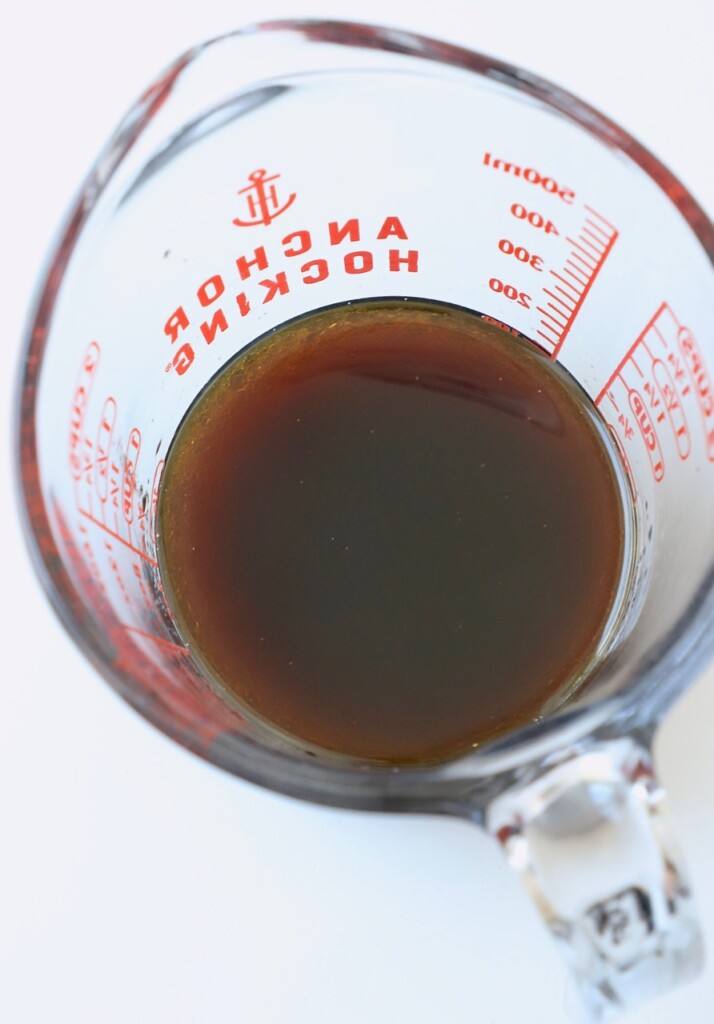
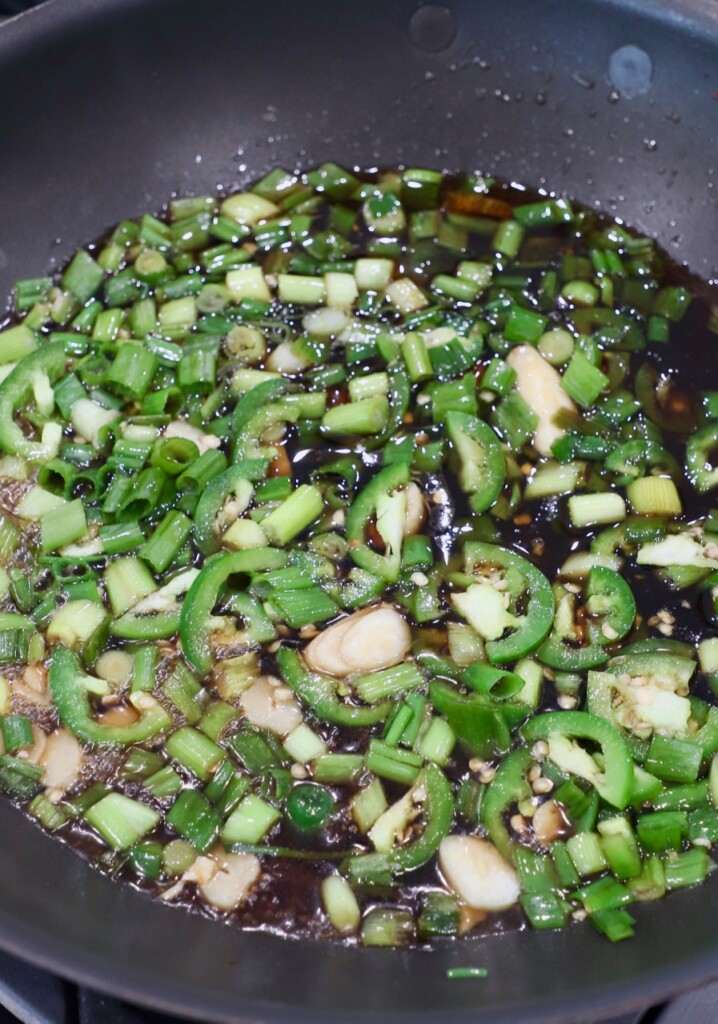
Instructions
- Prepare the noodles.
- Fill a large pot with water and bring to a boil.
- Add the soba noodles to the boiling water and cook according to package directions.
- Carefully remove the noodles from the heat, drain in a colander, rinse thoroughly with cold water, then set aside.
- Make the sauce.
- Measure the coconut aminos, rice vinegar and toasted sesame oil into a small bowl. Whisk until everything is combined.
- Sauté the veggies.
- Preheat a large skillet over medium-high heat.
- Drizzle in the canola oil.
- Add the green onions, jalapeños and garlic. Sauté for 60 seconds.
- Finish the dish.
- Pour the sauce into the pan and cook for 30 seconds.
- Add in the cooked and rinsed soba noodles and toss to combine.
- Build the bowls.
- Divide the noodles between 2 bowls.
- Garnish with toppings like carrots, cabbage, edamame, cilantro and sesame seeds.
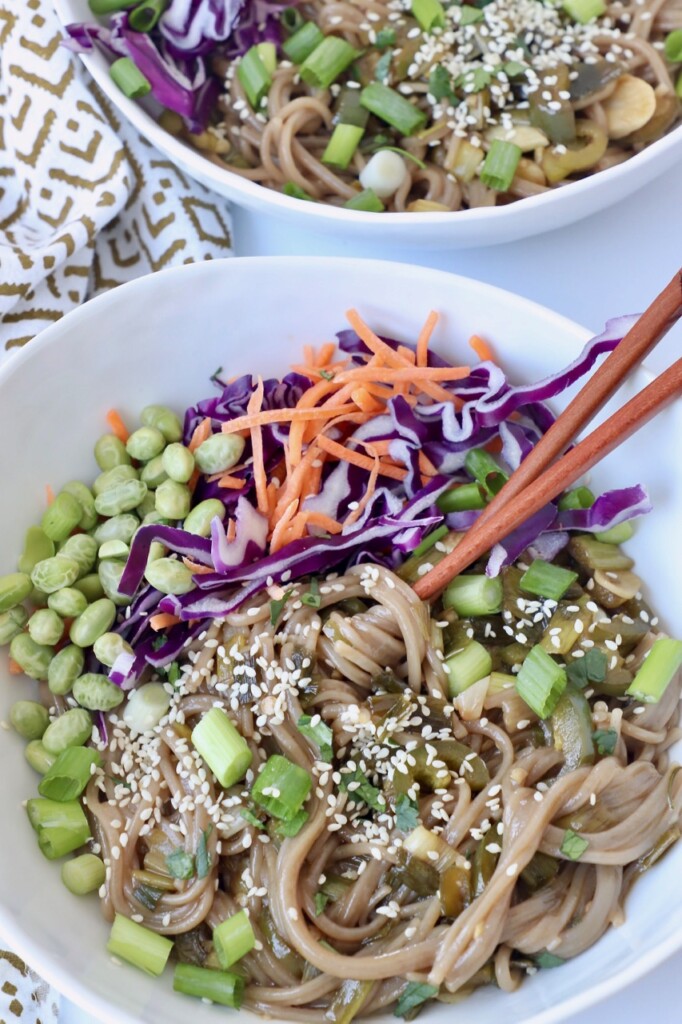
Optional additions
Mix up the bowl and make it your own with more veggies or other spicy additions!
- Sriracha - add 1 tablespoon to the sauce to add spice and flavor!
- Fresh ginger - 1 teaspoon of fresh grated ginger added to the sauce is delicious.
- Snap peas - toss these in with the veggies while sautéing.
- Mushrooms - sautéed mushrooms taste great with the other flavors in this dish.
- Bok Choy - get in your leafy greens by tossing baby bok choy in with the vegetables.
- Bell peppers - add these to the bowls raw, or sauteed with the other veggies.
- Avocado - slice a fresh avocado for a creamy topping.
- Thai basil or mint - chop more fresh herbs to add an extra burst of fresh flavor to the bowls.
- Broccolini - add cooked broccolini or broccoli to the bowl for added nutrients.
- Cucumber - garnish the noodles with slices of cool cucumber.
- Radish - add some slices on top for a crunchy bite!
Add a protein
- Add a plant based protein.
- One serving of this Asian Marinated Tempeh, which is 4 ounces, will add 26 grams of protein to the noodle bowls.
- Press and dice extra-firm tofu, then heat the cubes in the pan with everything else. One half cup will add 10 grams of protein to each serving.
- Add a meat based protein
- Mix in 4 ounces of cooked chicken per serving to increase the protein by 19 grams. (The chicken in this Whole30 Chicken Teriyaki Bowl would taste great in these bowls!)
- Shrimp is another good option, just 3 ounces of cooked shrimp per bowl will boost the protein by 12 grams.
Meal prep it
- To prep ahead: Prepare the recipe as instructed, but refrain from adding the toppings.
- For storage: Divide the cooked noodles in the sauce between 2 large microwave-safe storage containers. Place the toppings in two smaller containers, and put those in with the noodles. Seal the lid and keep in the refrigerator for up to 5 days.
- To reheat and eat: Remove the lid and take out the container with toppings. Microwave the noodles for 2 minutes or until warm, add the toppings, and dig in!
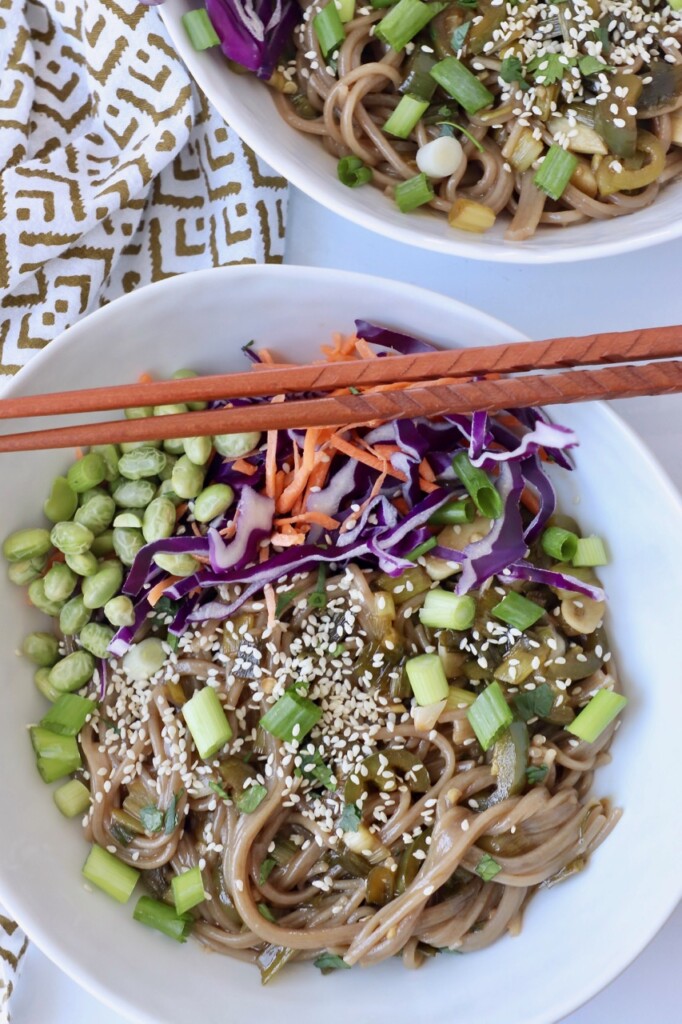
Frequently asked questions
- Can you skip the step of rinsing the soba noodles? No!! The soba noodles absolutely must be rinsed in cold running water after they're cooked, or they will stick together and the texture of the noodles will be gummy. I promise, I've made that mistake and the texture is not good!
- Are soba noodles healthy? The short answer is, it depends on your definition of healthy. Each brand of soba noodles is different so it is important to check the label. 100% buckwheat soba noodles offer plant-based protein, fiber, iron and are gluten free, but they are high in calories or carbohydrates.
- What is the difference between udon and soba? The main difference comes down to the ingredients, udon noodles are made with whole wheat flour, while soba noodles are made with buckwheat. Additionally soba noodles are slightly thinner that udon.
- Are soba noodles gluten free? Yes, as long as they are made with 100% buckwheat, or a combination of buckwheat and a gluten free flour, like rice flour. Definitely check the label if you are sensitive to gluten, as some brands may contain wheat flour.
- Are soba noodles vegan? Yes, the soba rice noodles used in this recipe are vegan.
- How long do you boil soba noodles? On average soba noodles take around 7-8 minutes to cook, always check the package for specific directions.
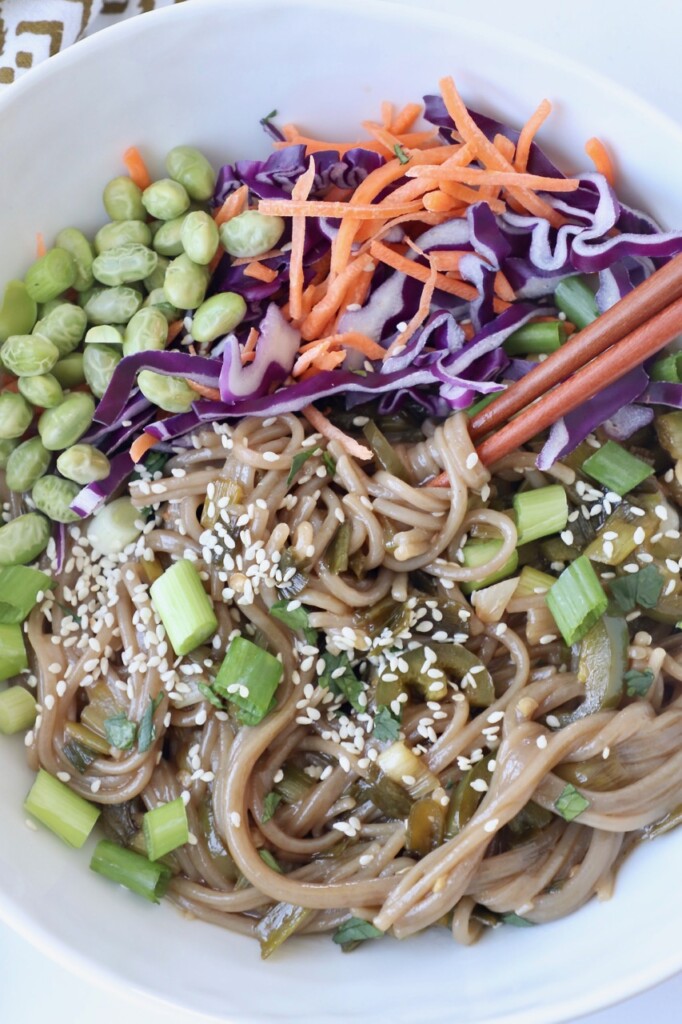
More Asian inspired recipes
Make Asian-style bowls every night of the week with these popular recipes!
- Vegan Poke Bowl
- Asian Tempeh Bowl with Peanut Sauce
- Keto Fried Rice
- Crispy Asian Brussels Sprouts Bowl
- Keto Pad Thai
Recipe
Sesame Soba Noodles Bowl
Ingredients
- 8 ounces soba noodles *see notes below
- ¼ cup coconut aminos or tamari
- 2 tablespoons rice vinegar
- 2 tablespoons toasted sesame oil
- 1 tablespoon canola oil or olive oil
- 1 cup green onions chopped
- 1 jalapeno thinly sliced
- 3 cloves garlic thinly sliced
- ½ cup carrots shredded
- ½ cup cabbage shredded
- ½ cup edamame beans
- ¼ cup cilantro leaves
- 2 teaspoons sesame seeds
Instructions
- Bring a large pot of water to a boil.
- Add the soba noodles and cook according to package directions.
- While the noodles are cooking, combine the coconut aminos, rice vinegar and toasted sesame oil in a small bowl.
- Remove the noodles from the heat, drain in a colander, rinse thoroughly with cold water then set aside.
- Add the canola oil to a large skillet on the stove over medium-high heat.
- Add the green onions, jalapenos and garlic, saute for 60 seconds.
- Add the sauce to the skillet and cook for 30 seconds, then add the soba noodles and toss to combine.
- Divide the noodles between 2 bowls.
- Top with carrots, cabbage, edamame, cilantro and sesame seeds.
Notes
- Soba noodles - if you're gluten free, always make sure to buy soba noodles that are 100% buckwheat flour or mixed with another gluten free flour, like rice flour. I used a Soba Rice Noodle for this recipe, that's made from brown rice flour and buckwheat flour. Some soba noodles, found in stores, will use wheat flour and buckwheat flour, so always be sure to read the label.
- The soba noodles absolutely must be rinsed in cold running water after they're cooked, or they will stick together and the texture of the noodles will be gummy. I promise, I've made that mistake and the texture is not good!
- This recipe is vegan and gluten free, when using the ingredients pictured in this post.




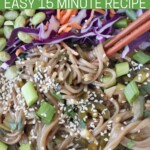


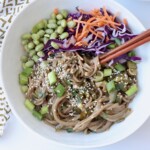
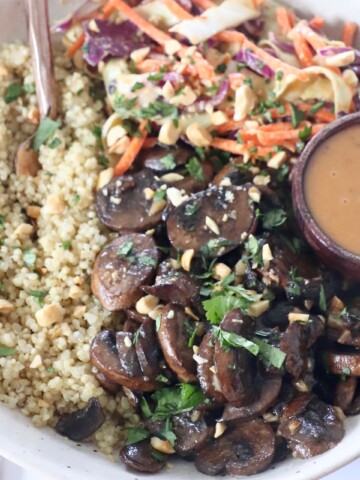
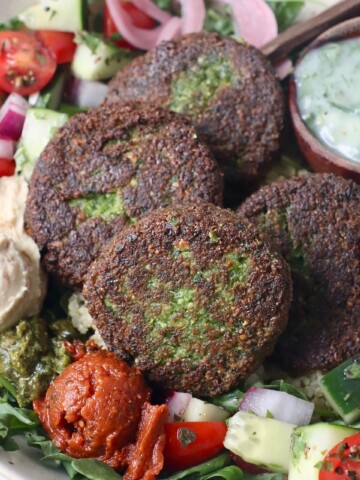
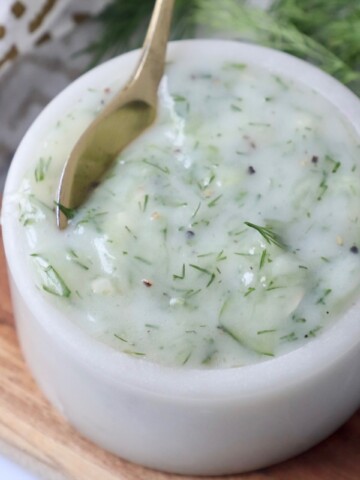
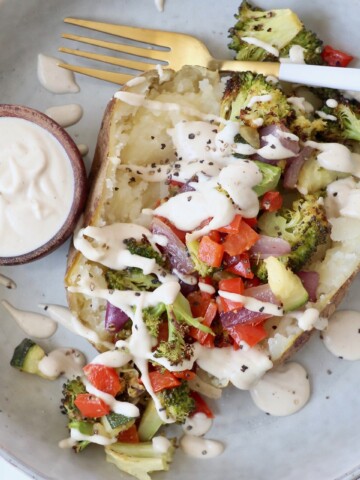
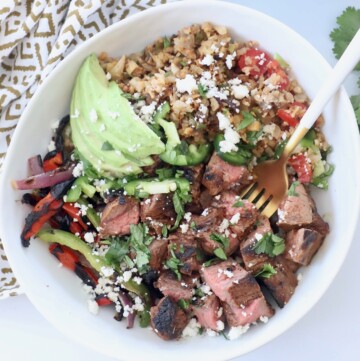
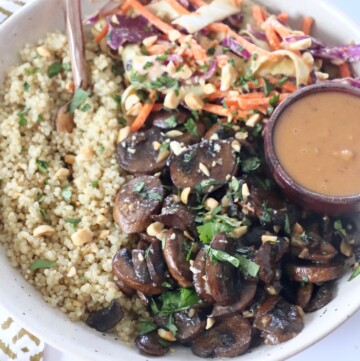
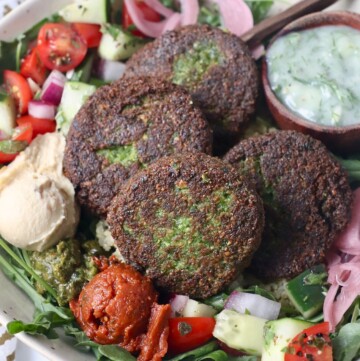
Comment Here!